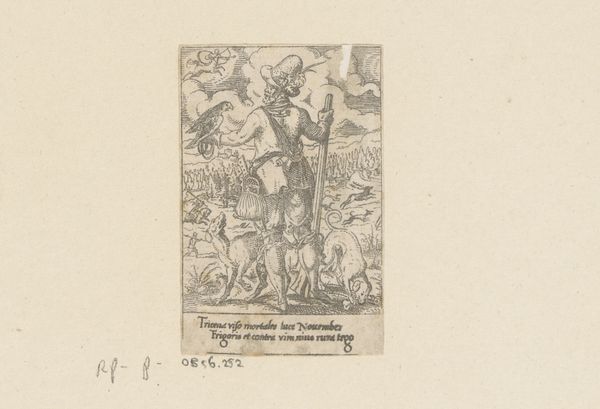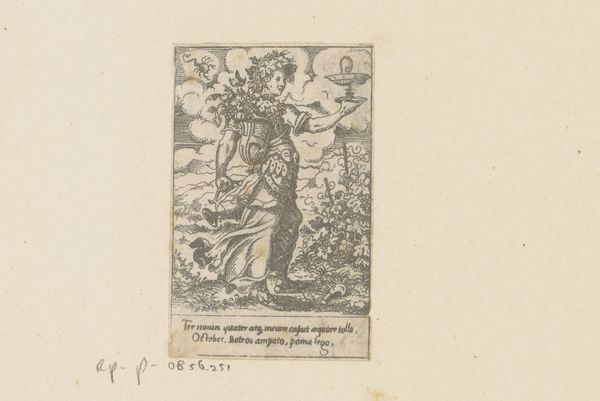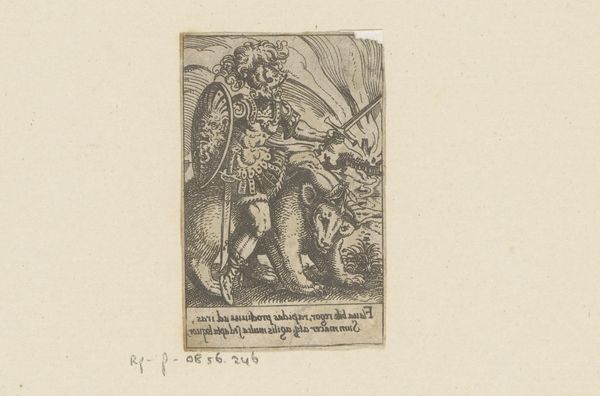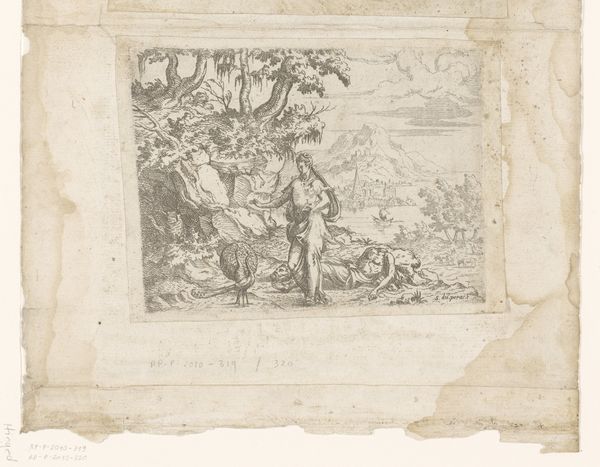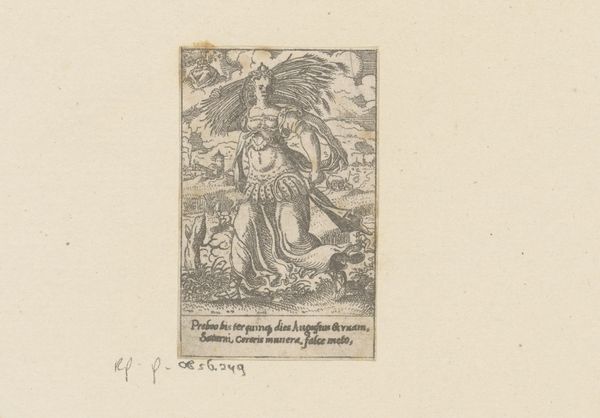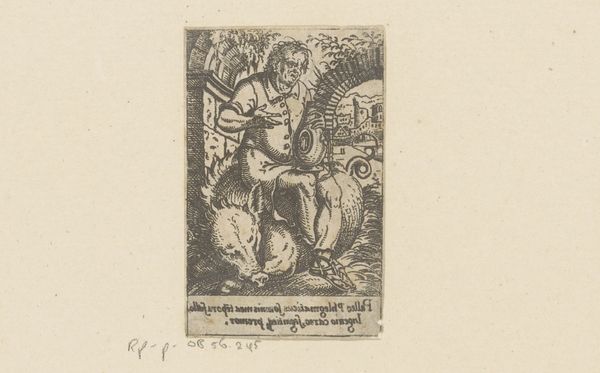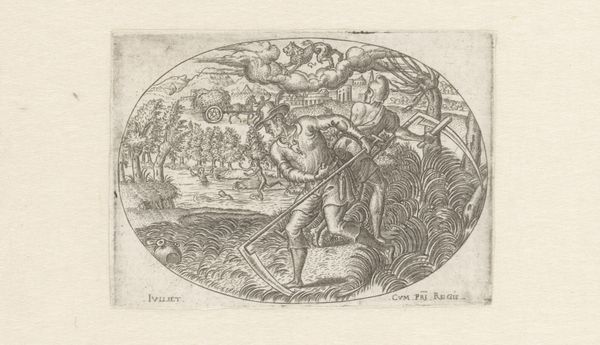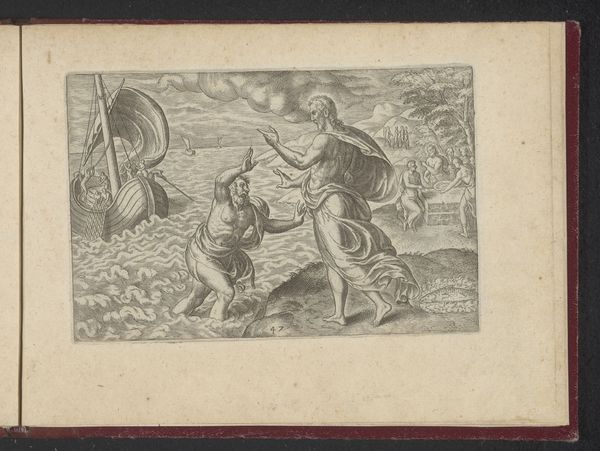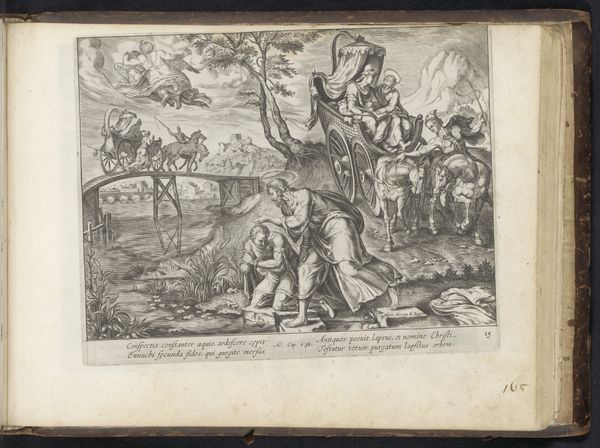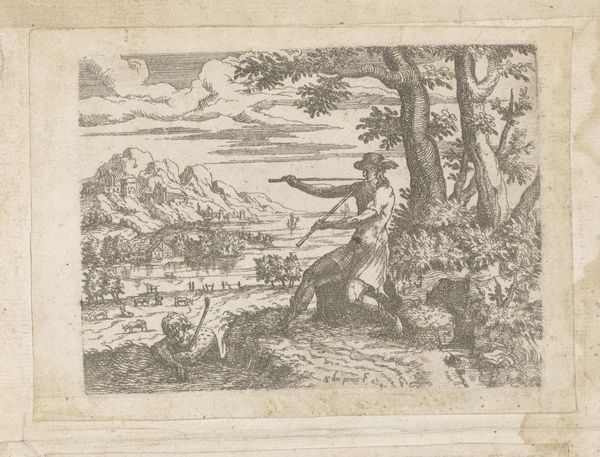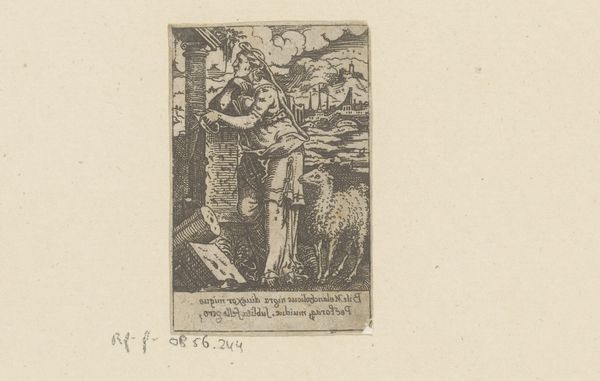
print, engraving
# print
#
landscape
#
figuration
#
11_renaissance
#
line
#
genre-painting
#
engraving
Dimensions: height 64 mm, width 41 mm
Copyright: Rijks Museum: Open Domain
Editor: Here we have "Juli," an engraving created sometime between 1549 and 1591 by an anonymous artist. It depicts a figure with a scythe in a landscape. There's a rustic quality to the lines that really stands out. What’s your take on this piece? Curator: As a print, this work’s meaning is fundamentally tied to its method of production. Think about the engraver, painstakingly carving into the metal plate. Each line represents time and labor, a physical engagement with the material world to produce this image. The multiple, almost mechanical reproduction of this scene also changes our understanding of it. This shifts art from a singular creation to a mass produced item. What do you think this means to its cultural impact? Editor: So, it democratizes the image? More people can have access to it, move it, interpret it? Curator: Exactly. And let's think about the materials. Copper wasn’t just any material; it had specific trade routes and economic value. The ink used, the paper it was printed on - these all point to a larger network of production and consumption. What sort of access would ordinary people have to these prints? Were these commissioned for the wealthy? Or made available to all? Editor: The text beneath the image seems important then – it tells us about intended meaning of work – perhaps some instructions, in Latin… Curator: Yes, consider who would be able to read the Latin inscription. Who was this image for and what role did it play? This also prompts us to examine whose labor and what materials went into not only making the image, but even the act of captioning! Editor: I see it as more than just an image now, but also an object rooted in social and economic realities of the time. Thanks! Curator: Indeed, by understanding art through the lens of its production, we unearth connections to labor, trade, and power. It transforms our perception of the artistic process.
Comments
No comments
Be the first to comment and join the conversation on the ultimate creative platform.

